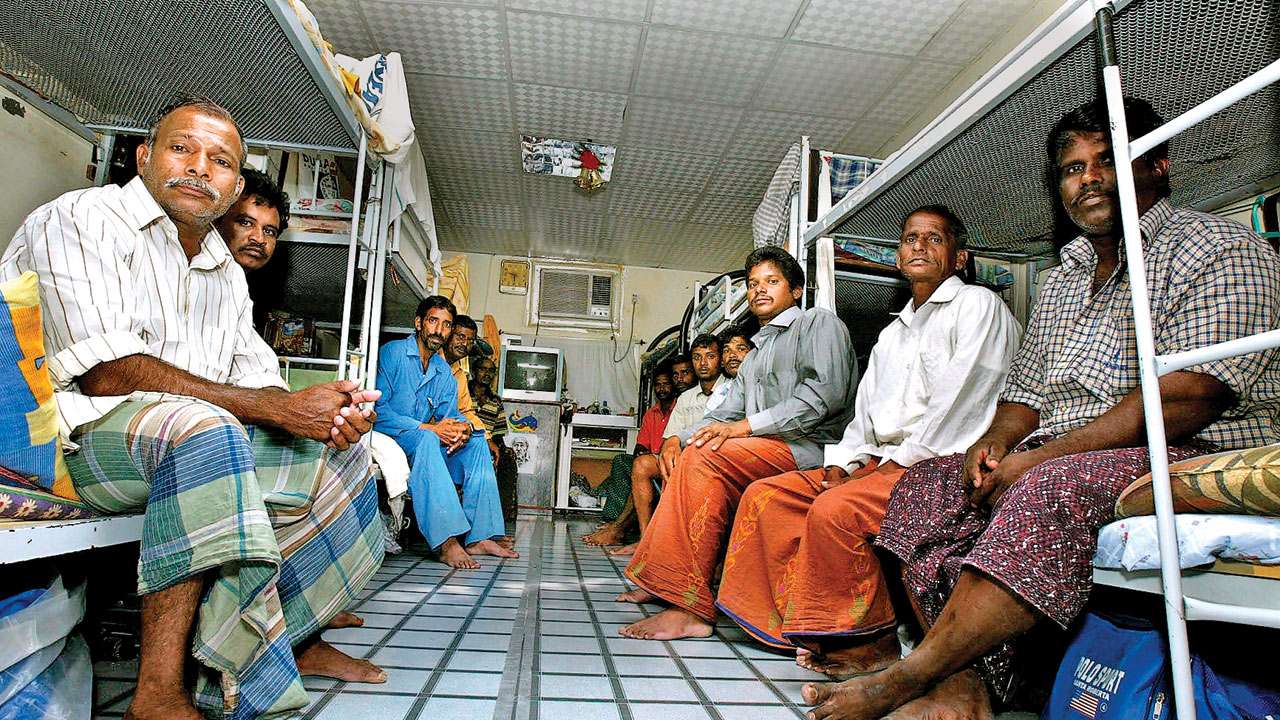
The geography of migration flow is changing, in line with the global economy. South Asia is emerging as the migration hub of the world — two of five international migrants originate in Asia.
The story of Indian labour migration to the Gulf region, completing almost five decades since the oil price boom, is a widely discussed aspect of Indian economy and society.
However, migrants are still invisible among policymakers and their concerns are not given the importance they deserve. This is true not just in India, but also in the rest of South Asia.
When an issue emerges in the limelight concerning migrants in the Gulf, sending countries raise concerns that are not followed through, and business continues as usual with both parties being satisfied with the gross economic benefits.
Employing almost half of the Indian migrant stock and likewise being the source of half of the $80 billion annual remittances to India, the Gulf region is often lauded as a destination for Indians to seek employment and their families to improve their economic, social and subjective well-being.
For instance, about 2.5 million Keralites living in the Gulf give business to four international airports and send about Rs 85,000 crores as remittances to the state, which is equivalent to 35 per cent of state’s domestic product.
This long-preserved narrative has been an obstacle in investigating deeper aspects of this phenomenon and understanding its true nature.
Although academic studies and popular literature have given some importance to facets such as exploitation and unsafe working conditions, we might be oblivious to the extent to which such conditions render harm.
In addition, the immeasurable social costs of migration are enormous. For instance, in Kerala, one million wives of Gulf migrants are away from their husbands, two million children live with just one parent and 4 million elderly stay alone due to the absence of their adult children, thanks to migration.
Data collected through the Ministry of External Affairs, Government of India, in response to an RTI application on fatalities of Indian workers in the Gulf reveal a grim picture.
Between 2012 and mid-2018, at least 24,570 Indian workers died in the six Gulf countries. This amounts to a death rate of one in 362 Indian migrant workers.
This also equals 117 deaths for every $1 billion remitted. With this in mind, it is imperative to make a comparison between these six countries.
At 10,416, the most number of deaths occurred in Saudi Arabia during this period while Bahrain accounted for the least number - 1,317 deaths.
However, these absolute numbers may be misleading. Saudi Arabia is the most dangerous place for an Indian worker with a death rate of one in 223 workers. Oman, with 187 deaths for every $1 billion remitted, is the costliest nation in monetary terms.
Among the six GCC countries, UAE is the least dangerous with a death rate of one in 638 workers and 72 deaths for every $1 billion remitted.
The majority of fatalities are in the construction industry, which is the largest employer in the Gulf. It should also be noted that this industry is growing with big new construction projects emerging in all GCC countries.
A variety of reasons may be attributed to the high mortality rates enumerated earlier. Apart from dying on the job and accumulated injuries as a result of working in physically stressful conditions, vulnerability to diseases and infections as well as anxiety and fear of being unable to repay the massive debts incurred to migrate are causes.
The Kerala Migration Surveys, conducted by the Centre for Development Studies since 1998, elaborate the fact that the cost of migration is increasing and migrants resort to more expensive borrowings to finance the cost.
Furthermore, high rates of suicide are also documented among migrant workers in the Gulf.
Although some medical studies have tried to explore these causes, mainly among Nepali migrant workers as their mortality rates are higher than that of their other South Asian counterparts, not much attention has been given at the state level.
It is time that the government gives importance to the loss of lives of Indian citizens on foreign soil. While the Indian government and aspiring migrant workers may be reluctant to let go of economic opportunities in the Gulf, a united front with more collective bargaining power can negotiate better outcomes.
To curb high mortality rates, the South Asian Association for Regional Cooperation (SAARC) countries can raise issues of exploitation and unsafe working conditions with the GCC.
The SAARC countries, being both a major labour source as well as a trading partner for the GCC, can characterize the seriousness of high death rates and negotiate a positive outcome without putting a dent in relations with the GCC.
Moreover, SAARC can negotiate fairer wages and social security for their workers as a united labour exporting force just like the Organization of the Petroleum Exporting Countries (OPEC) fix the price for oil.
It is also critical that India should take a leadership role in this endeavour. India is not only the largest country in this coalition, but also the largest labour source due to its demographic dividend and remittance receiver.
As countries such as Nepal, Bangladesh, Sri Lanka and Pakistan may not have a developed democratic apparatus such as India’s, migrant deaths may not end up being important in public discourse.
Moreover, at a time when the Indian government has opened the new draft Emigration Bill for public comments, the matter of migrant deaths will be widely discussed, and creative solutions can be formulated.
It is up to India to take these solutions to SAARC forums, and with the support of other countries in the coalition, press the GCC for serious labour reform.
Author is professor, CDS, Kerala